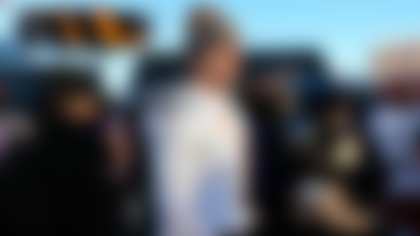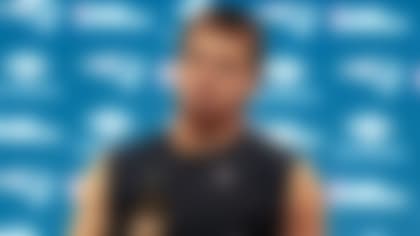Tony Dungy is defensive (literally) when he's described as the inventor of the "Tampa 2" defense.
When Dungy's Colts play Bill Belichick's New England Patriots in the most ballyhooed regular-season NFL game this century, fans will see a sharp contrast in defenses between the NFL's top two coaches. Both coaches came from the defensive side: the Tampa 2 against Belichick's 3-4. But the contrast is not as drastic as it seems.
Belichick has been certified as a "defensive genius" since 1986, the season the New York Giants won the Super Bowl a year after he became the team's defensive coordinator.
At that point, however, he was running a scheme installed by his then-boss, Bill Parcells, in 1981. And there's always the question of how much "genius" it took to coach a unit that included Lawrence Taylor, probably the best outside linebacker ever, with fellow Hall of Famer Harry Carson on the inside, and Carl Banks, an all-decade player of the '80s, on the strong side.
Dungy didn't become a genius until a decade later, when he became head coach in Tampa Bay, the league's most downtrodden franchise, and turned it into a perennial playoff team. He did it with what was quickly dubbed the Tampa 2 for its two-deep zones in the secondary and small, quick players such as Derrick Brooks, Ronde Barber and Warren Sapp (quick, if not small).
Belichick's genius is most visible not in 1986, but at the 1991 and 2002 Super Bowls. He was the coordinator of the Giants in the first title game, the head coach of the Patriots in the second. But he used the same schemes to shut down two of the best offenses in recent history: Buffalo in '91 and St. Louis in '02.
In both games, with his team an underdog, he used just two down linemen and sometimes as many as seven defensive backs to control Jim Kelly and Kurt Warner.
The Giants won 20-19 (Scott Norwood, wide right after Thurman Thomas took advantage of those defenses to run the Bills into position for a winning field goal). The Patriots won 20-17 on Adam Vinatieri's 48-yard field goal after St. Louis had overcome a 17-3 deficit by finally challenging Belichick's schemes by running Marshall Faulk.
New England's current defense is a refinement of the Parcells/Belichick units of two decades ago. But the Patriots still depend on quality linebackers. Not Taylor, Carson and Banks, perhaps, but most often experienced and skilled players who can coordinate their moves to cause offenses maximum confusion.
In Belichick's early days in New England, Willie McGinest played the Taylor role, an athletic pass rusher who also had enough size to play end. Mike Vrabel, a backup in Pittsburgh but a star in Foxborough, was on the other side. He remains there today and had three sacks for forced fumbles against Washington last week.
Vrabel teams with another premier pass rusher, Rosevelt Colvin. Adalius Thomas, the aged Junior Seau and Tedy Bruschi are on the inside.
Dungy's defenses line up differently, but a lot of the players have the same qualities.
Indianapolis' ends, Dwight Freeney and Robert Mathis, could be outside linebackers in Belichick's system, especially Mathis, who at 235 pounds has to be one of the lightest defensive ends in the NFL in decades. Both are premier pass rushers.
Small and quick occasionally has worked against Dungy, as it did most of 2006, when the Colts finished last against the run.
But it also makes a lot of linebackers and cornerbacks dispensable. Last season, the Colts allowed both starting cornerbacks and linebacker Cato June to leave as free agents, because they thought of them as interchangeable parts easily replaced. One of those ex-Colts cornerbacks, Jason David, was torched by Indy in the season opener against New Orleans, because David was playing man-to-man coverage, something at which he's not adept.
Belichick confirms that Dungy's defense is system as much as players.
"They've got a couple of changes at linebacker and the corners, but fundamentally they play the same," he says. "When you watch last year's tapes and cut-ups with this year's plays, it's hard to tell, 'this is this year, this is last year.' You don't see June in there, but it's hard to tell. It really is hard to tell."
The one exception is strong safety, often the key in the Tampa 2 because he is the primary run stopper.
The run defense leaked last season when Bob Sanders, one of the best at that position, played just four regular-season games. He returned from injury for the playoffs and, in one of the most dramatic turnarounds ever, a unit that allowed 173 yards per game on the ground yielded just 83 in the postseason.
"When he's out there, we benefit from it," Dungy said of the undersized (5-foot-8, 206 pounds) safety after he returned from injury to star in a win over Jacksonville two weeks ago. "He had an interception, made tackles and had a play on fourth-and-1 that was really unbelievable. He just has a knack for that."
Sanders is a smaller version of John Lynch, a perennial Pro Bowler for Dungy in Tampa and, at 36, still starting in Denver. Those safeties are like Belichick's linebackers, versatile against the run and pass.
Dungy, offensive coordinator Tom Moore and Peyton Manning won't get suckered Sunday the way Mike Martz did in that Super Bowl against the Rams. If Belichick uses two down linemen Sunday, Joseph Addai will run and run and run.
Belichick knows that. It will make for an interesting chess game.
Copyright 2007 by The Associated Press



